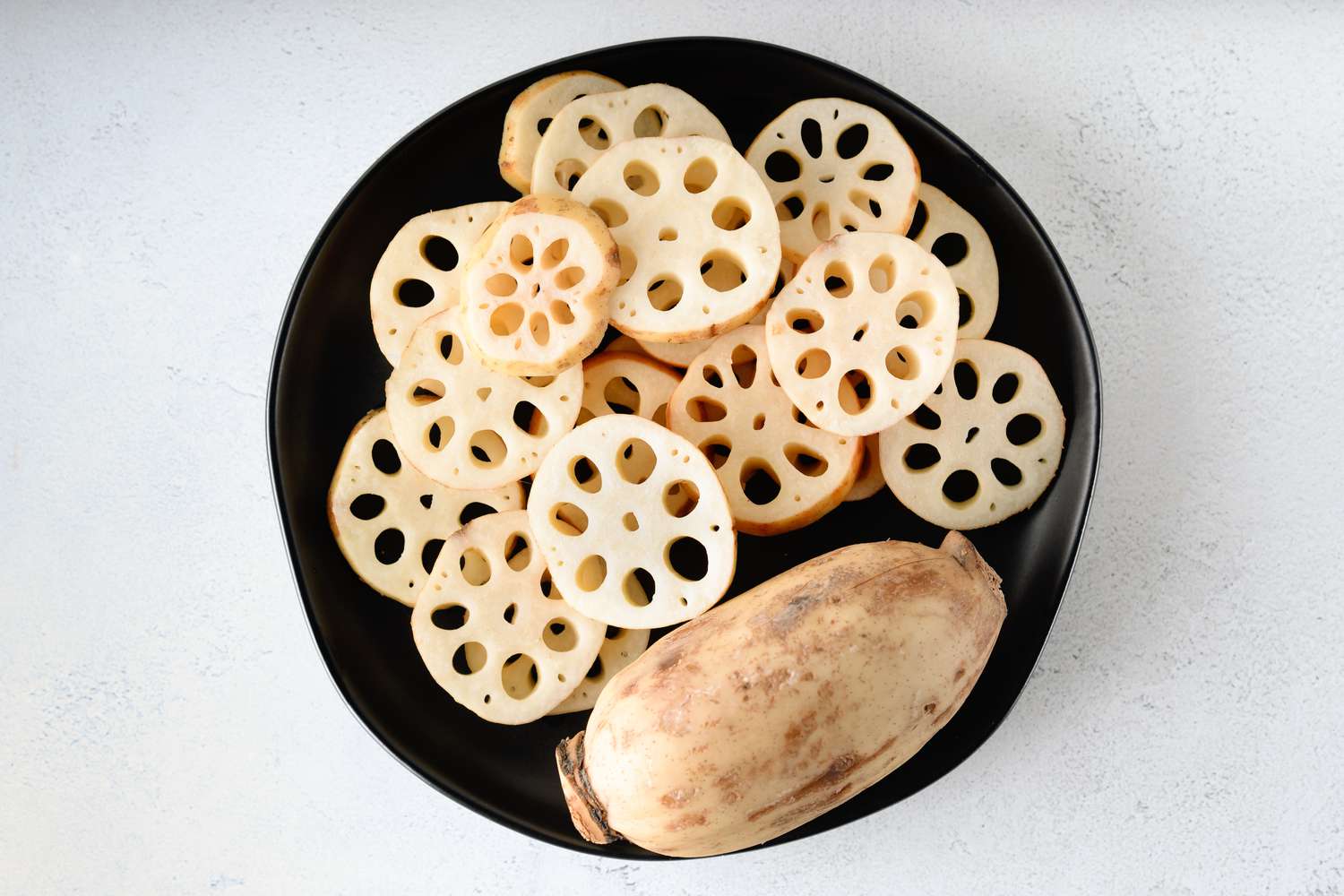
Lotus root is more than just a crunchy addition to your stir-fry. This unique vegetable, often found in Asian cuisine, boasts a rich history and numerous health benefits. Ever wondered why it's shaped like a wheel? Or how it can stay fresh for months? Lotus root isn't just tasty; it's packed with vitamins, minerals, and fiber. From ancient medicinal uses to modern culinary delights, this root has a story to tell. Whether you're a foodie, a health enthusiast, or just curious, these 25 facts about lotus root will surprise and inform you. Ready to learn more? Let's dig in!
Key Takeaways:
- Lotus root, a crunchy and slightly sweet vegetable, is packed with nutrients and has cultural significance. It boosts immunity, aids digestion, and can even help regulate blood pressure. Plus, it's a versatile ingredient in various dishes!
- Did you know that lotus root has been cultivated for over 7,000 years? It's not just nutritious; it's also a symbol of purity and rebirth in many Asian cultures. Plus, it can float in water and has a long shelf life!
What is Lotus Root?
Lotus root, a staple in Asian cuisine, is the edible rhizome of the lotus plant. Known for its crunchy texture and slightly sweet flavor, it offers numerous health benefits. Let's dive into some fascinating facts about this unique vegetable.
-
Botanical Name: The botanical name for lotus root is Nelumbo nucifera.
-
Cultural Significance: In many Asian cultures, lotus root symbolizes purity, enlightenment, and rebirth.
-
Appearance: Lotus root has a distinctive appearance with a series of holes running through it, resembling a wheel.
-
Culinary Uses: It can be eaten raw, stir-fried, boiled, or even pickled.
-
Nutrient-Rich: Packed with vitamins and minerals, it is a great source of vitamin C, potassium, and dietary fiber.
Health Benefits of Lotus Root
Beyond its culinary uses, lotus root is celebrated for its health benefits. Here are some reasons why you might want to include it in your diet.
-
Boosts Immunity: High in vitamin C, it helps strengthen the immune system.
-
Aids Digestion: The dietary fiber in lotus root promotes healthy digestion and prevents constipation.
-
Regulates Blood Pressure: Potassium in lotus root helps maintain healthy blood pressure levels.
-
Supports Weight Loss: Low in calories and high in fiber, it can aid in weight management.
-
Improves Skin Health: Antioxidants in lotus root help combat skin aging and promote a healthy complexion.
Historical and Cultural Facts
Lotus root has a rich history and cultural significance, especially in Asian countries. Here are some intriguing historical and cultural facts.
-
Ancient Cultivation: Lotus plants have been cultivated for over 7,000 years in Asia.
-
Symbolism in Buddhism: In Buddhism, the lotus flower represents purity and spiritual awakening.
-
Traditional Medicine: Used in traditional Chinese medicine for its cooling properties and to treat various ailments.
-
Festivals: Lotus root is often featured in festivals and celebrations, especially in China and Japan.
-
Art and Literature: Frequently depicted in Asian art and literature, symbolizing beauty and grace.
Interesting Facts About Growing Lotus Root
Growing lotus root is an art in itself. Here are some fascinating facts about its cultivation.
-
Water Requirement: Lotus plants need shallow, muddy water to grow, typically in ponds or wetlands.
-
Propagation: Grown from tubers or seeds, it takes about six months for the roots to mature.
-
Harvesting: Harvested in late summer to early autumn, the roots are carefully dug out to avoid damage.
-
Climate: Prefers warm, tropical climates but can also be grown in temperate regions with proper care.
-
Pest Resistance: Generally resistant to pests, making it a relatively low-maintenance crop.
Fun Facts About Lotus Root
Lotus root isn't just nutritious and culturally significant; it also has some fun and quirky aspects.
-
Floating Ability: The holes in lotus root help it float in water, a unique adaptation for its aquatic environment.
-
Versatile Ingredient: Used in a variety of dishes, from soups and salads to desserts and snacks.
-
Crispy Texture: When fried, lotus root becomes incredibly crispy, making it a popular snack.
-
Color Change: When exposed to air, the cut surface of lotus root can turn brown, similar to apples.
-
Long Shelf Life: When stored properly, lotus root can last for several weeks, making it a convenient ingredient to keep on hand.
The Final Bite
Lotus root isn't just a pretty face in the culinary world. Packed with vitamins, minerals, and fiber, it's a powerhouse of nutrition. Its unique texture and mild flavor make it a versatile ingredient in many dishes, from stir-fries to soups. Beyond its culinary uses, lotus root holds a special place in traditional medicine, believed to offer various health benefits like improving digestion and boosting the immune system.
Whether you're a foodie looking to try something new or someone interested in the health perks, lotus root is worth a spot on your plate. Its rich history and cultural significance add an extra layer of appreciation. So next time you're at the market, grab some lotus root and experiment with this fascinating ingredient. Your taste buds and body will thank you!
Frequently Asked Questions
Was this page helpful?
Our commitment to delivering trustworthy and engaging content is at the heart of what we do. Each fact on our site is contributed by real users like you, bringing a wealth of diverse insights and information. To ensure the highest standards of accuracy and reliability, our dedicated editors meticulously review each submission. This process guarantees that the facts we share are not only fascinating but also credible. Trust in our commitment to quality and authenticity as you explore and learn with us.


